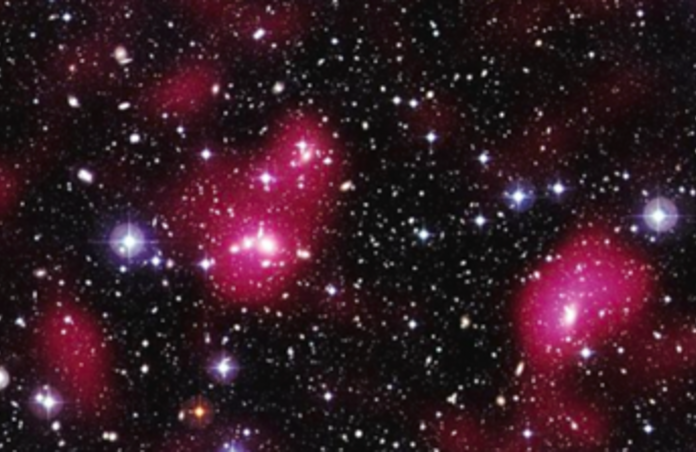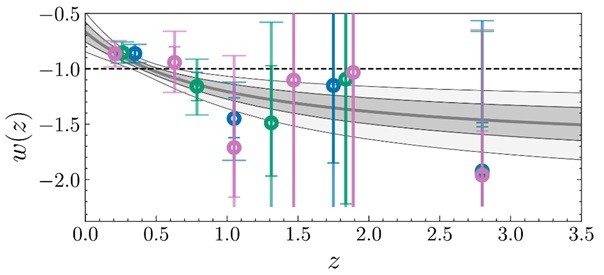Evidence for Dynamical Evolution of Cosmological Constant and Phantom Energy

The Friedmann equation, derived from general relativity, governs the expansion of spacetime. However, it was found incompatible with observations, notably the universe’s accelerating expansion. This led to the ΛCDM model, our leading cosmological framework. It postulates the existence of a dark energy, which exerts forces against gravity and drives an accelerated expansion. This amendment came in the form of the cosmological constant, Λ.
Dark energy, like other forms of energy, is characterised by the equation of state (EoS) parameter w, relating its pressure to its density linearly. For example, this parameter is set to zero in many dark matter models as it is assumed that dark and ordinary matter cannot interact by non-gravitational means i.e. for any density, dark matter exerts no pressure. Dark energy meanwhile is assigned a parameter of -1, implying negative pressure that sustains a constant density.
Since 2021, the DESI has been gradually releasing survey data on galaxies at extremely high redshifts. Last year, tentative evidence was found that rather than a constant, dark energy appeared to weaken over time. Now, a new release by the DESI collaboration quantifies this weakening. The newly published paper sources data collected during the first three years of DESI’s operation, investigating the large-scale distribution of matter in the form of galaxies. They attempt to place constraints on dark energy by measuring the expansion of the universe using Baryon Acoustic Oscillations (BAOs).
BAOs arise from the propagation of sound waves in the primordial universe, which spread in spherical shells as a matter overdensity. Around 380,000 years after the Big Bang, this propagation ceased, and the overdense shells became fixed at a radius of approximately 150 Mpc. As a result, galaxies are preferentially separated by this distance. By studying the clustering of galaxies at various redshifts and identifying any preferential separations, the team were able to measure the characteristic BAO length scale at different times. Any changes to this scale arise solely due to the expansion of space, and so this allows them to directly measure the expansion history of the universe.
The results of their study favour a dynamical model of the cosmological constant, especially at lower redshifts, where measurements are more reliable. In this regime, they find that the EoS parameter is less negative than the value currently assumed in ΛCDM, suggesting that dark energy has a weaker influence on cosmological expansion today than previously thought.

As w becomes more negative, the strength of dark energy increases, eventually reaching the phantom energy regime, where w<−1. This phase is associated with highly accelerated expansion. Notably, the team finds that in the past, the EoS parameter was much lower, with their data revealing a "phantom crossing," a transition across the w=−1 boundary, from today's dark energy to the phantom energy of the past.
The consequences of this conclusion are profound, as it would have significant implications for many areas of cosmology. For instance, a transition to a weakening EoS could suggest that the ultimate fate of the universe may be a recollapse and potentially a second Big Bang, rather than the infinite expansion predicted by ΛCDM. However, uncertainties remain in methods for deriving dark energy content from expansion histories. Future research, including upcoming DESI data, SNe measurements, and next-generation CMB experiments, will be crucial for refining these constraints and determining whether a paradigm shift in cosmology is necessary.
--
Journal Source: K. Lodha et al, Extended Dark Energy analysis using DESI DR2 BAO measurements, (2025), arXiv: https://arxiv.org/pdf/2503.14743
Cover Image: NASA/STAGES
